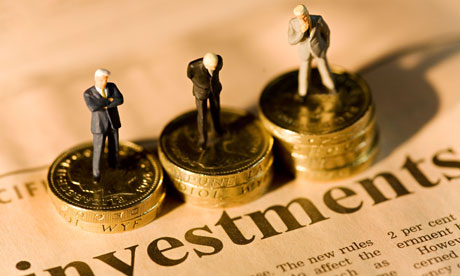

Published on November 2nd, 2017 | by Joshua S Hill
November 2nd, 2017 by Joshua S Hill
A first-of-its-kind five-year trend analysis of global investments aimed at addressing climate change found that the annual average was $410 billion, and reached a record high of $437 billion in 2015 before falling to $383 billion in 2016.
The independent analytical and advisory organization Climate Policy Initiative published this week a first-ever five-year trend analysis of global investment aimed at low-carbon and climate-resilient actions. The report, Global Landscape of Climate Finance 2017 (Landscape 2017), found that such investments reached a record high of $437 billion in 2015 before falling back to $383 billion in 2016, but that overall the average annual investments addressing climate change are around $410 billion.
2015’s record investment was driven by increased private investment in renewable energy — particularly in China — as well as in rooftop solar in the United States and Japan. Conversely, the decline in 2016 is due primarily to a combination of falling renewable energy technology costs as well as lower capacity additions in some countries.
The report concludes that the annual average investment during 2015-16 is around $410 billion, 12% up on the average during 2013-14.
“Two years since the negotiations of the Paris Agreement, there are still significant challenges in mobilizing the investment required to meet its goal of limiting global warming to, at most, 2 degrees Celsius,” said Barbara Buchner, Executive Director of Climate Policy Initiative. “While our numbers show that a wide range of public and private finance actors are taking advantage of the strong political signal following Paris, a broader scale-up of investments across all sectors is critically needed to avoid dangerous climate change.”
The Climate Policy Initiative also highlighted the fact that, while the growth in renewable energy investment is good, other important areas such as energy efficiency, low-carbon transport, agriculture, water, curbing deforestation, and climate adaptation activities remain severely underfunded — highlighting IEA figures that suggest they are underfunded to the tune of at least $1 trillion annually.
Further strangling the necessary forward momentum is the fact that fossil fuel investment remains strong, estimated by the IEA at around $825 billion in 2016, dwarfing overall investment in climate change.
“While it’s clear that an overall scale-up of investment is needed, there are several positive trends from the last few years that may help the outlook for climate investments going forward,” said Padraig Oliver, Senior Analyst at Climate Policy Initiative. “Falling technology costs, the Paris Agreement, initiatives that engage capital markets and large corporations, efforts to green public financial systems, and the rise of new sustainable investment vehicles are all new developments that bode well for the future.”
These “positive trends” also include a growth in private sector investments towards climate change, which averaged $270 billion annually in 2015 and 2016, 23% higher than the annual average in 2013-14. Further, average annual public spending on renewable energy actually decreased by $11 billion from 2013/2014 to 2015/2016, which might sound on the surface like a bad thing, but it suggests that “renewable energy is becoming a commercial investment choice in more markets with less support needed from public entities.”
Check out our new 93-page EV report, based on over 2,000 surveys collected from EV drivers in 49 of 50 US states, 26 European countries, and 9 Canadian provinces.
more recommended stories
 Fentanyl Seizures at Border Continue to Spike, Making San Diego a National Epicenter for Fentanyl Trafficking
Fentanyl Seizures at Border Continue to Spike, Making San Diego a National Epicenter for Fentanyl TraffickingFentanyl Seizures at Border Continue to.
 Utah Man Sentenced for Hate Crime Attack of Three Men
Utah Man Sentenced for Hate Crime Attack of Three MenTuesday, August 8, 2023 A.
 Green Energy Company Biden Hosted At White House Files For Bankruptcy
Green Energy Company Biden Hosted At White House Files For BankruptcyAug 7 (Reuters) – Electric-vehicle parts.
 Former ABC News Reporter Who “Debunked” Pizzagate Pleads Guilty of Possessing Child pδrn
Former ABC News Reporter Who “Debunked” Pizzagate Pleads Guilty of Possessing Child pδrnFriday, July 21, 2023 A former.
 Six Harvard Medical School and an Arkansas mortuary Charged With Trafficking In Stolen Human Remains
Six Harvard Medical School and an Arkansas mortuary Charged With Trafficking In Stolen Human RemainsSCRANTON – The United States.
 Over 300 People Facing Federal Charges For Crimes Committed During Nationwide Demonstrations
Over 300 People Facing Federal Charges For Crimes Committed During Nationwide DemonstrationsThe Department of Justice announced that.

